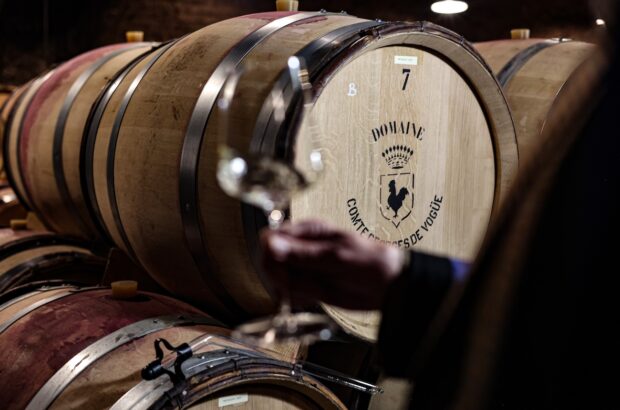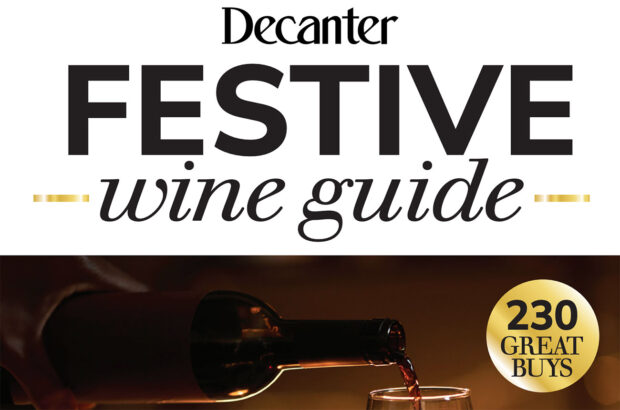Christmas marks the time of year when marketing hype goes into overdrive, encouraging us all to part with our hard-earned cash for everything from the latest kids’ toys to wifi-enabled washing machines..
For many of us, it’s the one occasion every year we will spend above our comfort zone on a few bottles of wine. But there’s no need to break the bank: despite rising supply chain and duty costs, it’s still possible to pick up some delicious, Christmas-worthy wines for under £15.
The selection below covers a wide selection of regions and styles, which will pair perfectly with turkey, duck, beef, vegetarian options, or even boxing day leftovers.
{"content":"PGRpdiBjbGFzcz0iYnJlYWtvdXQgcGFsZXR0ZS1hIHBhbmVsIHBhbmVsLWRlZmF1bHQiPjxkaXYgY2xhc3M9InBhbmVsLWJvZHkiPjxkaXYgY2xhc3M9J2JyZWFrb3V0LWNvbnRlbnQnPjwvcD4KPGgyIHN0eWxlPSJ0ZXh0LWFsaWduOiBsZWZ0OyI+UmVkIHdpbmUgZm9yIENocmlzdG1hczogdGhpbmdzIHRvIGtub3c8L2gyPgo8aDMgc3R5bGU9InRleHQtYWxpZ246IGxlZnQ7Ij5Bdm9pZCBiaWcgdGFubmluczwvaDM+CjxwIHN0eWxlPSJ0ZXh0LWFsaWduOiBsZWZ0OyI+VW5sZXNzIHlvdeKAmXJlIHNlcnZpbmcgYmVlZiwgaXTigJlzIHBlcmhhcHMgYmVzdCB0byBzYXZlIHlvdXIgdGFubmljIHJlZHMgKHRoaW5rIHlvdW5nIEJvcmRlYXV4LCBCYXJvbG8sIE5hcGEgQ2FiZXJuZXQpIGZvciBhbm90aGVyIHRpbWUuIFlvdeKAmWxsIGZpbmQgdGhhdCB0aGUgaW50ZW5zZSBmbGF2b3VycywgcHVuY2h5IHNwaWNlcyBhbmQgZmF0dGluZXNzIG9mIHRyYWRpdGlvbmFsIENocmlzdG1hcyBmYXJlIGRvZXMgbm90IHBsYXkgbmljZWx5IHdpdGggdGFubmlucywgYW5kIHRoZSByZXN1bHQgd2lsbCBiZSBhbiBhc3RyaW5nZW50IG1vdXRoZnVsLjwvcD4KPGRpdiBjbGFzcz0iYWQtY29udGFpbmVyIGFkLWNvbnRhaW5lci0tbW9iaWxlIj4KPGRpdiBpZD0icG9zdC1pbmxpbmUtMiIgY2xhc3M9ImlwYy1hZHZlcnQiPjwvZGl2Pgo8L2Rpdj4KPHAgc3R5bGU9InRleHQtYWxpZ246IGxlZnQ7Ij5JbnN0ZWFkLCBwaWNrIG91dCBhIHJlZCB3aXRoIHNvZnRlciB0YW5uaW5zIHN1Y2ggYXMgYSBSaW9qYSBHcmFuIFJlc2VydmEsIENoaWFudGkgQ2xhc3NpY28sIFBpbm90IE5vaXIsIG9yIGEgbWF0dXJlIHZpbnRhZ2Ugb2YgQm9yZGVhdXggb3IgQmFyb2xvLjwvcD4KPGgzIHN0eWxlPSJ0ZXh0LWFsaWduOiBsZWZ0OyI+U2VydmUgY29vbDwvaDM+CjxwIHN0eWxlPSJ0ZXh0LWFsaWduOiBsZWZ0OyI+T25lIG9mIHRoZSBtb3N0IGNvbW1vbiBtaXN0YWtlcyB3aGVuIHNlcnZpbmcgcmVkcyBpcyB0byBwb3VyIHRoZW0gdG9vIHdhcm0sIHBlcmhhcHMgYmFzZWQgb24gdGhlIG1pc25vbWVyIHRoYXQg4oCYcm9vbSB0ZW1wZXJhdHVyZeKAmSBpcyBvayDigJMgZXhjZXB0IHRoZXNlIGRheXMsIG1vc3Qgb2YgdXMgaGF2ZSBjZW50cmFsIGhlYXRpbmcgYW5kIGhvdXNlcyBhcmUgbXVjaCB3YXJtZXIgdGhhbiB3aGVuIHRoaXMgYWR2aWNlIGZpcnN0IGNpcmN1bGF0ZWQuIElmIHNlcnZlZCB0b28gd2FybSwgcmVkIHdpbmVzIGNhbiBzZWVtIOKAmGZsYWJieeKAmSBhbmQgbGFja2luZyBpbiBlbmVyZ3kuIEluc3RlYWQsIGFpbSB0byBzZXJ2ZSBsaWdodC0gdG8gbWVkaXVtLWJvZGllZCByZWRzIGF0IDEyLTE2wrBDICg1NC02McKwRiksIGFuZCBmdWxsZXIgYm9kaWVkIHJlZHMgYXQgMTUtMTjCsEMgKDU5LTY1wrBGKS4gVGhleeKAmWxsIHdhcm0gdXAgb25jZSBpbiB0aGUgZ2xhc3MgYW55d2F5LjwvcD4KPGgzIHN0eWxlPSJ0ZXh0LWFsaWduOiBsZWZ0OyI+RG9uJiM4MjE3O3QgYmUgbWlzbGVkIGJ5IG1hcmtldGluZyB0cmlja3M8L2gzPgo8cCBzdHlsZT0idGV4dC1hbGlnbjogbGVmdDsiPkFzIHRlbXB0aW5nIGFzIGl0IGNhbiBiZSwgZG9u4oCZdCBmYWxsIGZvciBzbmF6enkgbGFiZWxzLCBoZWF2eSBib3R0bGVzIGFuZCBkZWVwIHB1bnRzLiBUaGV5JiM4MjE3O3JlIGFsbCBtYXJrZXRpbmcgdHJpY2tzIHRvIG1ha2UgYSB3aW5lIHNlZW0gbW9yZSBwcmVtaXVtIHRoYW4gaXQgaXMuIEluc3RlYWQsIGhvbWUgaW4gb24gd2luZXMgZnJvbSBhIHJlZ2lvbiBvciBtYWRlIGZyb20gYSBncmFwZSB2YXJpZXR5IHRoYXQgeW91IGtub3cgeW91IGxpa2UsIGFuZCBpZGVhbGx5IGZpbmQgYSB3aW5lcnkgdGhhdCBtYWtlcyB3aW5lcyB5b3UmIzgyMTc7dmUgZW5qb3llZCBpbiB0aGUgcGFzdC48L3A+CjxkaXYgY2xhc3M9ImFkLWNvbnRhaW5lciBhZC1jb250YWluZXItLW1vYmlsZSI+CjxkaXYgaWQ9InBvc3QtaW5saW5lLTMiIGNsYXNzPSJpcGMtYWR2ZXJ0Ij48L2Rpdj4KPC9kaXY+CjxoMz5CdXkg4oCYaW4gdGhlIG1pZGRsZeKAmTwvaDM+CjxwPlRoZSBjaGVhcGVzdCB3aW5lcyBhcmUgYSBmYWxzZSBlY29ub215LCBhcyBtb3N0IG9mIHRoZSBwcmljZSBjb3ZlcnMgcGFja2FnaW5nLCBzaGlwcGluZyBhbmQgZHV0eSBjb3N0cyB3aXRoIHZlcnkgbGl0dGxlIGxlZnQgZm9yIHRoZSB3aW5lIGluIHRoZSBib3R0bGUuPC9wPgo8ZGl2IGNsYXNzPSJpbmplY3Rpb24iPjwvZGl2Pgo8cD5FcXVhbGx5LCBvbmNlIHlvdSBnZXQgaW50byBwcmVtaXVtIHRlcnJpdG9yeSB5b3UmIzgyMTc7cmUgbm90IGFsd2F5cyBqdXN0IHBheWluZyBmb3IgYmV0dGVyIHdpbmUg4oCTIHdoaWxlIHRoZSBwcmljZSB3aWxsIGNvdmVyIHRoZSBjb3N0IG9mIGJldHRlciBwcm9kdWN0aW9uLCBzdWNoIGFzIGhpZ2ggcXVhbGl0eSBvYWsgYmFycmVscywgeW91IG1pZ2h0IGFsc28gYmUgcGF5aW5nIGZvciB0aGUgcHJlc3RpZ2Ugb2YgdGhlIHdpbmVyeSBvciB0aGUgcmVnaW9uICh0aGluayBDaGFtcGFnbmUpLCBvciBmb3IgYnV5aW5nIGEgbXVjaCBtb3JlIGxpbWl0ZWQgcHJvZHVjdCAodGhlIGxhdyBvZiBzdXBwbHkgYW5kIGRlbWFuZCYjODIzMDspLjwvcD4KPGRpdiBjbGFzcz0iYWQtY29udGFpbmVyIGFkLWNvbnRhaW5lci0tbW9iaWxlIj4KPGRpdiBpZD0icG9zdC1pbmxpbmUtNCIgY2xhc3M9ImlwYy1hZHZlcnQiPjwvZGl2Pgo8L2Rpdj4KPHA+VGhlIG9wdGltYWwgdmFsdWUtZm9yLW1vbmV5IHdpbmRvdyBpcyBzb21ld2hlcmUgYmV0d2VlbiBhcm91bmQgwqMxMCBhbmQgwqMyNSwgYW5kIGJlbG93IMKjMTUgeW91JiM4MjE3O3JlIGluIGJhcmdhaW4gdGVycml0b3J5IGlmIHlvdSBzaG9wIGNhcmVmdWxseS48L3A+CjxoMz5UaGVyZSBhcmUgcmVzb3VyY2VzIGF2YWlsYWJsZSB0byBoZWxwIHlvdTwvaDM+CjxwIHN0eWxlPSJ0ZXh0LWFsaWduOiBsZWZ0OyI+WW91IGNhbiwgb2YgY291cnNlLCBzZWFyY2ggZm9yIHJldmlld3MgYW5kIHJlY29tbWVuZGF0aW9ucyBvbiA8YSBocmVmPSJodHRwczovL3d3dy5kZWNhbnRlci5jb20vd2luZS1yZXZpZXdzL3NlYXJjaD9vcmRlclF1ZXJ5PW9yZGVyJTVCdXBkYXRlZF9hdCU1RCUzRGRlc2MiIHRhcmdldD0iX2JsYW5rIiByZWw9Im5vb3BlbmVyIj48c3Ryb25nPmRlY2FudGVyLmNvbTwvc3Ryb25nPjwvYT4uIEFuZCB3ZSBzdHJvbmdseSByZWNvbW1lbmQgYXNraW5nIHlvdXIgbG9jYWwgd2luZSBtZXJjaGFudCBmb3IgZ3VpZGFuY2UuIFRoZXkgbWF5IGV2ZW4gaGF2ZSBzb21lIHNhbXBsZXMgb3BlbiBmb3IgeW91IHRvIHRhc3RlITwvcD4KPGRpdiBjbGFzcz0iYWQtY29udGFpbmVyIGFkLWNvbnRhaW5lci0tbW9iaWxlIj4KPGRpdiBpZD0icG9zdC1pbmxpbmUtNSIgY2xhc3M9ImlwYy1hZHZlcnQiPjwvZGl2Pgo8L2Rpdj4KPHA+CjwvZGl2PjxkaXYgY2xhc3M9J2JyZWFrb3V0LWJ1dHRvbnMnPjxkaXYgY2xhc3M9J3Jvdyc+PC9kaXY+PC9kaXY+PC9kaXY+PC9kaXY+CjxwPgo="}
Christmas red wine recommendations under £15/$20
{}
{"wineId":"88145","displayCase":"standard","paywall":true}
{"wineId":"88149","displayCase":"standard","paywall":true}
{"wineId":"84914","displayCase":"standard","paywall":true}
{"wineId":"84270","displayCase":"standard","paywall":true}
{"wineId":"85354","displayCase":"standard","paywall":true}
{"wineId":"88100","displayCase":"standard","paywall":true}
{"wineId":"88129","displayCase":"standard","paywall":true}
{"wineId":"85173","displayCase":"standard","paywall":true}
{"wineId":"83549","displayCase":"standard","paywall":true}
{"wineId":"87024","displayCase":"standard","paywall":true}
{}
Related articles








